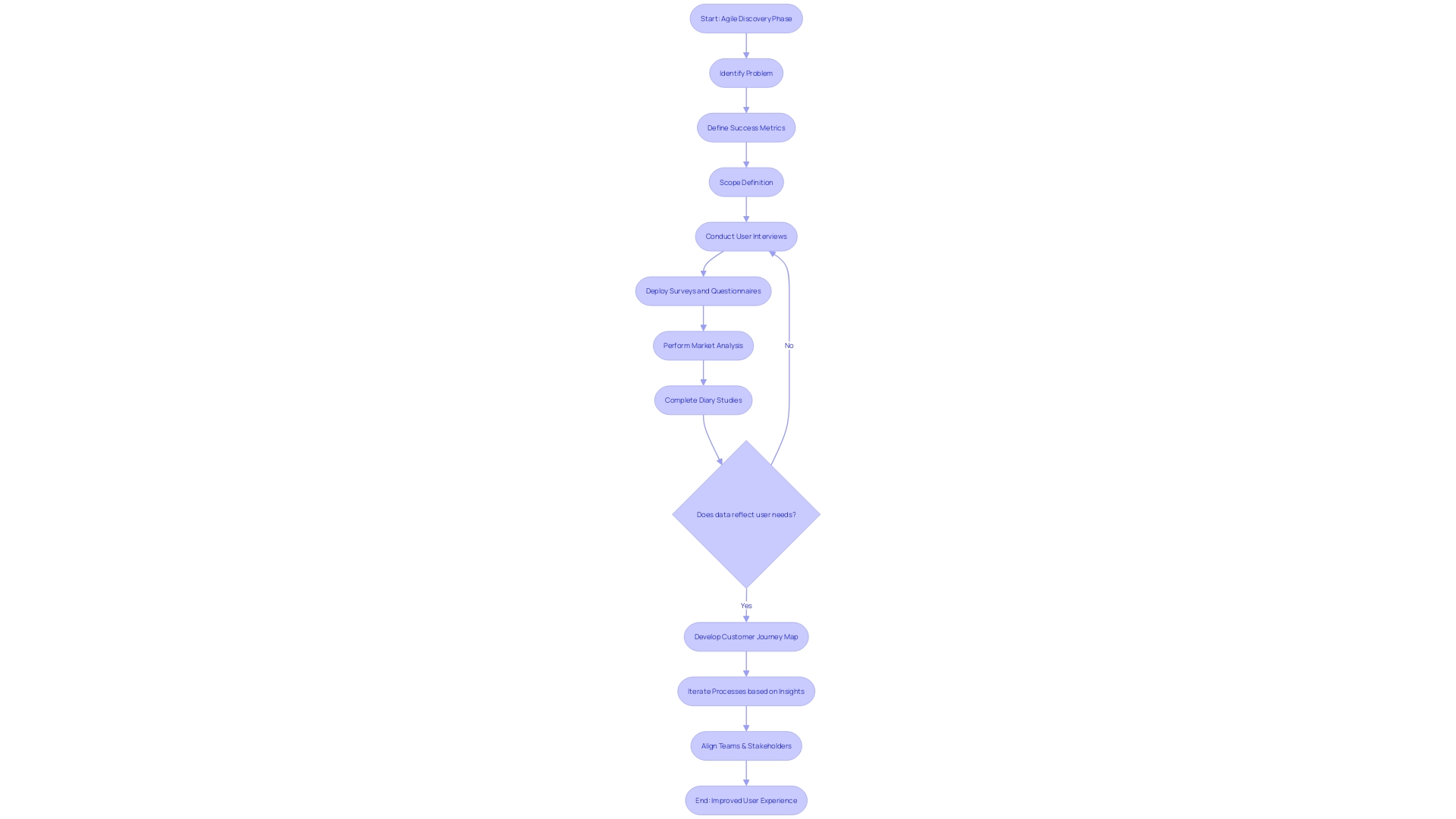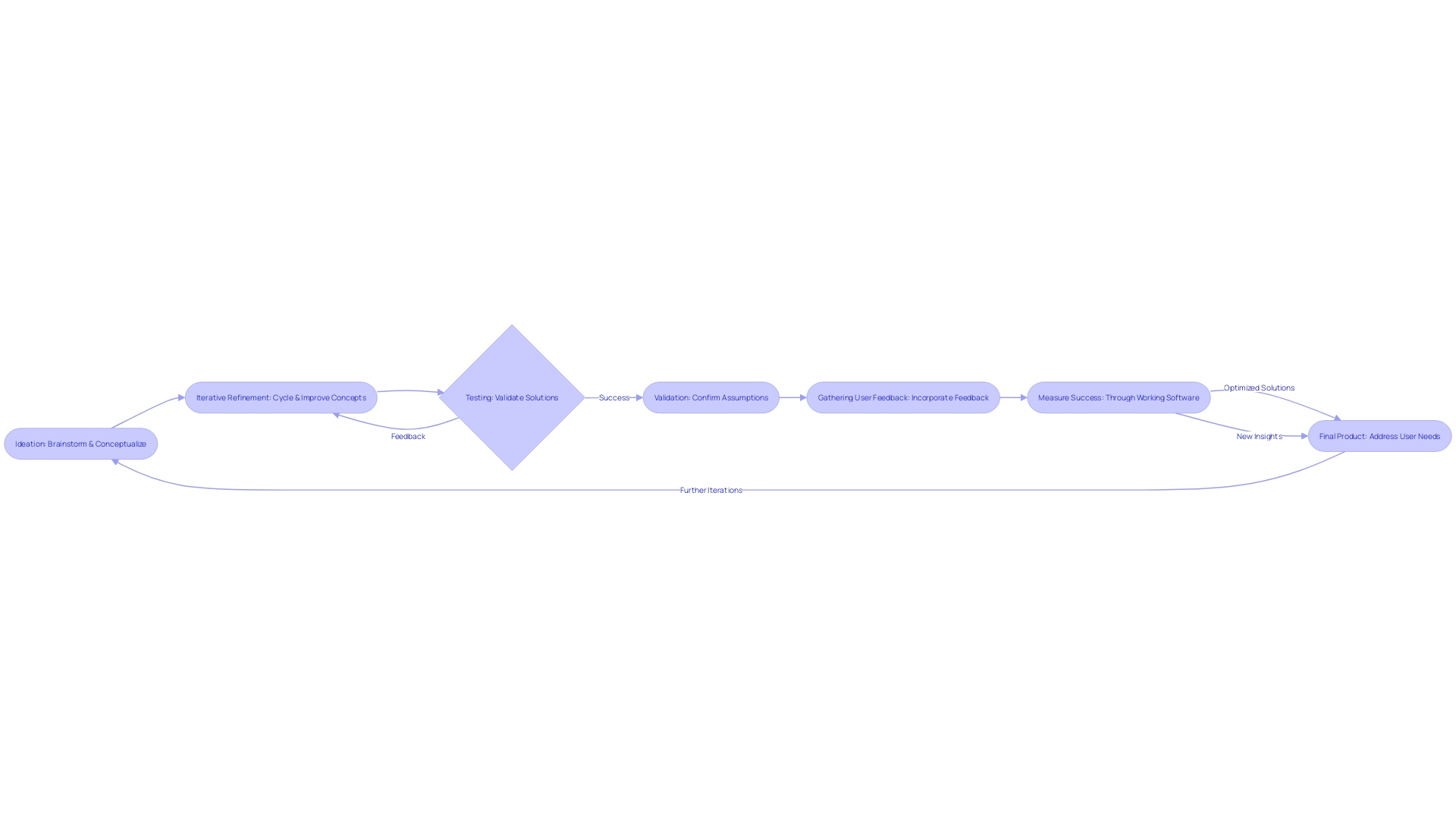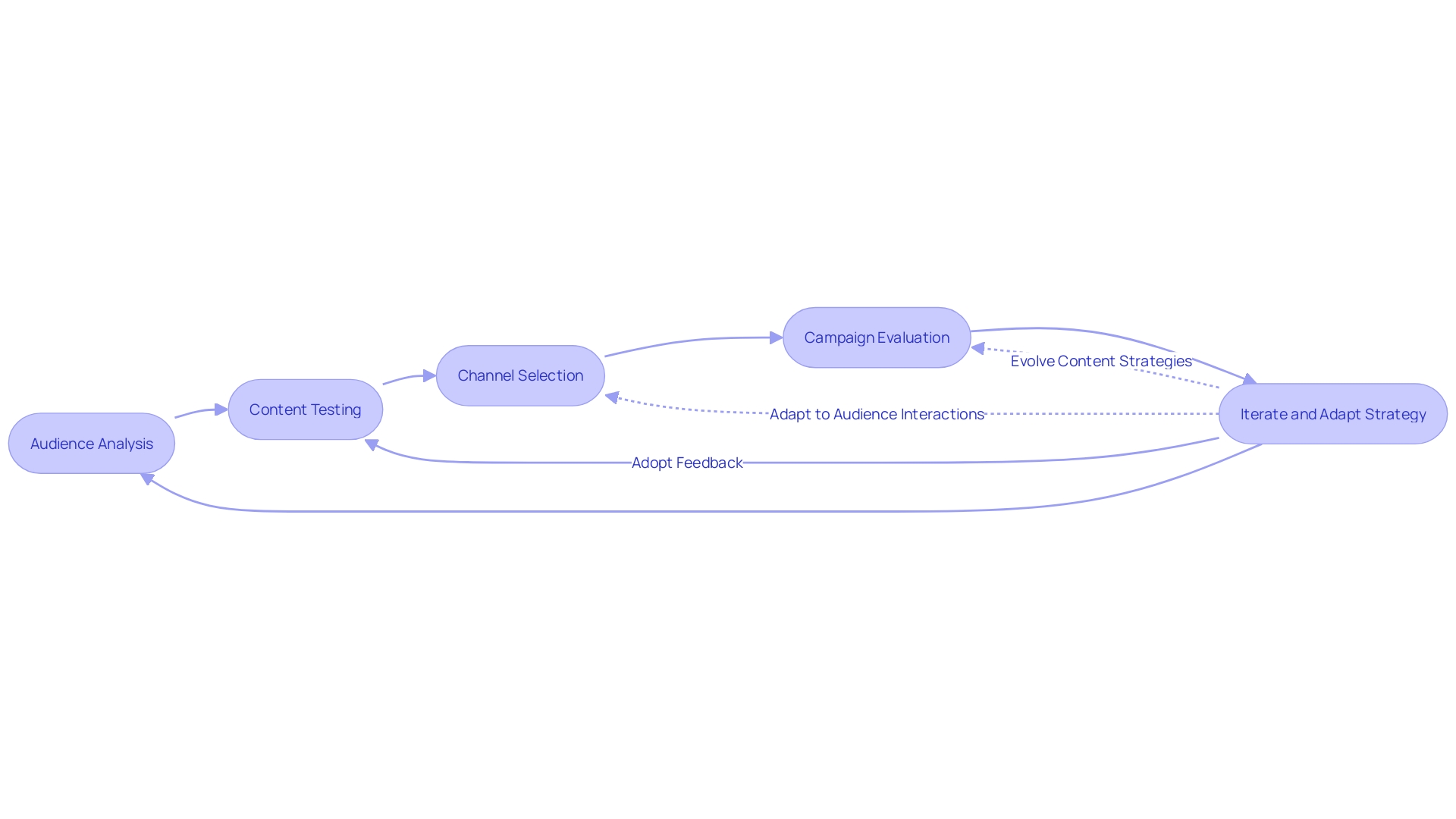Introduction
In today's tech-driven world, the Agile Discovery Phase requires a reframed approach that goes beyond traditional interview summaries and embraces a hands-on data collection approach. By understanding user problems and needs through user interviews, surveys, and market analyses, we can capture the richness of firsthand experiences.
The Agile mindset emphasizes rapid iteration and delivering a product that resonates with user needs. In this article, we will explore the research methodologies for Agile Discovery, organizing and prioritizing user feedback, refining results through iteration, and even implementing Agile Discovery in content marketing.
Understanding User Problems and Needs
To effectively harness the Agile Discovery Phase in today's tech-driven world, the approach must be reframed with an integrated perspective. Instead of solely relying on traditional interview summaries that may lack nuance, embedding a hands-on approach to data collection is essential—be it through user interviews, surveys, or in-depth market analyses.
As you seek to understand your target users' core problems, it's critical to move beyond mere manual notes to a synthesis that captures the richness of firsthand experiences. Recent statistics underscore this evolution, with over 26,000 global respondents revealing a shift towards AI tools in the State of Developer Ecosystem report.
These tools are not just for automation; they're engines for distilling user insights, a testament to how AI is shaping our methodologies. In aligning with market dynamics, the perspective of a seasoned designer resonates: Great ideas typically emerge from the crucible of numerous, diverse concepts—what is known as ideation.
This underlying principle is mirrored in the Agile methodology, contrasting sharply with its predecessor, the 'waterfall' model, which advocated for a more linear progress map. Today's Agile mindset places a premium on rapid iteration, even encouraging failure as an inroad to success. Moreover, while Agile advocates for working software as the primary measure of progress, the true north lies in delivering a product that resonates with user needs through insights gleaned from competitor and market gap analysis. A SWOT analysis can serve as a springboard, providing a framework for identifying where your product stands out in the marketplace. Amidst industry hurdles like developer burnout and the rise of AI, grounding your User Stories in solid understanding culled from real user experiences will ensure your solutions are not merely requirements, but truly responsive to user ambitions.

Research Methodologies for Agile Discovery
In the realm of Agile Discovery, the principles of iterative development are vital to crafting impactful software solutions. It's an approach that goes beyond mere process; it's a mindset that catalyzes the transformation of software creation and delivery. By synthesizing robust methodologies such as design thinking, lean startup, and user-centered design, Agile Discovery fosters a culture of rapid experimentation and continuous learning.
These methodologies are grounded in a user-centric perspective, encouraging iterative cycles of testing and a strong dedication to data-driven decisions. The agility of this approach was notably illustrated in a 2017 project that ventured into uncharted territory, where there was no existing pre-trained model to leverage. Teams faced significant challenges, from prolonged periods of data accumulation to the transformation of raw data into a workable format, further emphasizing the importance of Agile principles.
The Double Diamond model—acclaimed for its elegant distillation of the design process into a convergence of extensive ideation into a singular, well-crafted solution—complements this philosophy, though it is not without critique. Additionally, effective project management via tools like Conjecture Cards can pivot research from aimless wandering to targeted conclusions, a strategy particularly relevant in the competitive landscape of commercial data science. In embracing Agile methodologies, the precedence for iterative sprints enables developers to inspect and adapt frequently, facilitating the delivery of exemplary software that aligns precisely with the dynamic needs of customers.
Organizing and Prioritizing User Feedback
In the realm of agile project management, the discovery phase is crucial for integrating user feedback into the evolving product vision. The product owner, wielding domain expertise, must channel industry insights into concrete features that align with this vision.
Navigating through the complex web of user opinions, prioritizing necessary refinements becomes a sophisticated task demanding a blend of intuition and systematic analysis. Innovative feedback management tools have emerged, enabling the categorization and tracking of user insights, unveiling trends, and aligning adjustments with the overarching user experience objectives.
Such platforms can dissect and organize vast amounts of feedback, directing attention to crucial areas that significantly enhance the user experience. As Diary studies suggest, consistency in feedback collection through surveys can offer longitudinal insights into user behaviors, amplifying the precision of targeted improvements. While crowd-sourced feedback analysis lends a semi-automated edge, capturing a wider array of user needs and tendencies to propel product enhancements informed by the collective voice. This becomes a multifaceted approach: combining structured tools and methodologies to sift through feedback effectively, thereby facilitating strategic prioritization and decision-making that faithfully embodies the product vision and drives successful project outcomes.
Refining Results and Iteration
During the Agile Discovery Phase, the paradigm of ideation and iterative refinement is crucial. This process is exemplified by continuous testing and validating assumptions, utilizing experiments and prototypes effectively. Gathering user feedback early becomes imperative, enabling decisions that resonate with user requirements.
The methodology learns through rapid iterations, gleaning lessons from failures, optimizing continuously, and ultimately crafting solutions that address and resolve the core needs identified. Within the sphere of commercial data science, the journey to market success can be riddled with obstacles, as observed in a 2017 project inception. Without a pre-existing model, the project encountered delays due to the prolonged data preparation phase, underlining the necessity for agile management in navigating such challenges.
Agile's flexibility contrasts the sequential waterfall approach; welcoming amendments even at advanced stages to refine outcomes iteratively, adopting 'sprints' facilitating monitoring, and inculcating collaboration between developers and executives. All underscored by a key Agile tenet: 'Working software is the primary measure of progress.' Nevertheless, Digital.ai's 'State of Agile' survey indicates agile adoption faces resistance within larger organizations, despite its proven efficiency in smaller enterprises.
Through this lens, we understand the importance of not only ideating but shaping our efforts with a directed vision and strategy. This foundation gears us toward analyzing, designing, and testing our propositions before rolling out substantial investments in development. Comprehensive product thinking evolves to be crucial in a world increasingly dominated by software, as products now frequently encapsulate a significant software component, necessitating frequent updates and enhancements.

Implementing Agile Discovery in Content Marketing
Incorporating Agile methodologies into content marketing transforms the approach to crafting strategies that pivot on real-time audience engagement. The proven success of Agile, initially designed to expedite software development through frequent 'sprints' and iterative work, has now made its way into the realm of content creation. Marketers can adopt this iterative tactic to dissect and evaluate the preferences of target audiences, test various content types, and employ different channels to measure the effectiveness of their campaigns.
By welcoming change and adapting swiftly—the core tenets extolled in the founding Agile Manifesto—content strategies morph into living entities that evolve with audience interactions. Drawing inspiration from organizations like the National Multiple Sclerosis Society, which harnessed content personalization to deepen audience relationships, marketers can similarly foster trust and a profound connection through tailored content. Utilizing the insights from both successes and rapid iterations, the Agile content marketing approach is a robust means to home content that not only captures attention but also cultivates enduring value exchange with consumers.

Conclusion
In conclusion, the Agile Discovery Phase requires a reframed approach that goes beyond traditional interview summaries. By embracing a hands-on data collection approach and understanding user problems and needs through user interviews, surveys, and market analyses, we can capture firsthand experiences and deliver a product that resonates with user needs. The Agile mindset emphasizes rapid iteration, continuous learning, and data-driven decision-making.
Research methodologies such as design thinking, lean startup, and user-centered design are vital to fostering a culture of experimentation and delivering impactful software solutions. Organizing and prioritizing user feedback is crucial in integrating it into the evolving product vision. Feedback management tools help categorize and track insights, while diary studies and crowd-sourced feedback analysis provide valuable longitudinal insights into user behaviors.
Refining results and iterations are crucial in the Agile Discovery Phase. Continuous testing, gathering early user feedback, and optimizing solutions based on lessons learned from failures enable us to address core needs and deliver exemplary software. Implementing Agile Discovery in content marketing allows for strategies that pivot on real-time audience engagement.
Marketers can adopt iterative tactics, evaluate audience preferences, and measure campaign effectiveness, shaping content strategies that evolve with audience interactions and cultivate enduring value exchange with consumers. In conclusion, a holistic approach that encompasses research methodologies, iterative refinement, and effective feedback management is essential in the Agile Discovery Phase. By embracing the Agile mindset and incorporating it into different industries, we can deliver products and content that truly resonate with user needs and drive successful outcomes.





